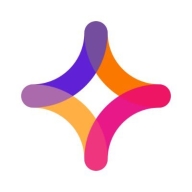

SSIS and Jitterbit Harmony are competing in the ETL solutions category. Jitterbit Harmony appears to be the more versatile option due to its cloud-based capabilities.
Features: SSIS offers seamless integration with Microsoft SQL Server, efficient workflow automation, and built-in support for SSAS tasks. Jitterbit Harmony provides extensive API capabilities, versatile data source support, and superior cloud-based integration tools.
Room for Improvement: SSIS could enhance its cloud capabilities and reduce dependency on Windows environments. Jitterbit Harmony might focus on reducing initial costs and improving user interface simplicity.
Ease of Deployment and Customer Service: SSIS requires a Windows environment and offers extensive documentation and support through Microsoft channels, which may lead to longer setup times. Jitterbit Harmony's cloud-native design allows for faster deployments and a centralized support system for quick issue resolution.
Pricing and ROI: SSIS generally involves lower initial setup costs, especially for organizations using Microsoft infrastructure. Jitterbit Harmony, though costlier upfront due to its subscription model, often delivers higher ROI through its flexibility and quicker time-to-value.
The tool has made us tremendously more efficient and saved us a significant amount of money.
Using SSIS has proven cost-effective as there are no additional fees outside the SQL Server license, and it significantly enhances data management efficiency.
The first line of support needs to be more knowledgeable.
It processes large volumes of data quickly.
Within the South African context, if you are getting your enterprise agreement from First Technology, they don't provide support.
SSIS has a difficult learning curve when dealing with complex transformations.
The logging capabilities could be improved, particularly for error logging.
Utilizing SSIS involves no extra charges beyond the SQL Server license.
It was included in our licensing for SQL server, and our licensing for SQL server was extremely cheap, making it a very good price point for us.
It is a very robust tool that can work with many data sources, and its main strength is that it is extremely easy to use.
One of the best aspects of SSIS is that it is built into Microsoft SQL Server, so there are no additional costs involved.
SSAS is included in the base installation of SQL Server.
| Product | Market Share (%) |
|---|---|
| SSIS | 5.7% |
| Jitterbit Harmony | 0.6% |
| Other | 93.7% |


| Company Size | Count |
|---|---|
| Small Business | 8 |
| Midsize Enterprise | 3 |
| Large Enterprise | 1 |
| Company Size | Count |
|---|---|
| Small Business | 26 |
| Midsize Enterprise | 19 |
| Large Enterprise | 57 |
Jitterbit Harmony offers an advanced integration platform that simplifies data transformation, helps users quickly connect apps, and automates workflows, streamlining complex business processes efficiently.
Designed to meet the high demands of modern businesses, Jitterbit Harmony enables seamless integration across cloud and on-premise environments. By leveraging its powerful tools and user-friendly design, users can accelerate innovation, reduce operational costs, and enhance productivity. It bridges the gap between traditional and emerging technologies, ensuring organizations can adapt quickly to market changes and remain competitive.
What are the key features of Jitterbit Harmony?Jitterbit Harmony finds its application across numerous industries, from enhancing data integration in the healthcare sector to optimizing supply chain logistics in manufacturing. It supports financial institutions by improving transaction processing and facilitates real-time data connectivity in retail environments, making it a versatile choice for diverse industries looking to innovate rapidly.
SSIS is a versatile tool for data integration tasks like ETL processes, data migration, and real-time data processing. Users appreciate its ease of use, data transformation tools, scheduling capabilities, and extensive connectivity options. It enhances productivity and efficiency within organizations by streamlining data-related processes and improving data quality and consistency.
We monitor all Data Integration reviews to prevent fraudulent reviews and keep review quality high. We do not post reviews by company employees or direct competitors. We validate each review for authenticity via cross-reference with LinkedIn, and personal follow-up with the reviewer when necessary.